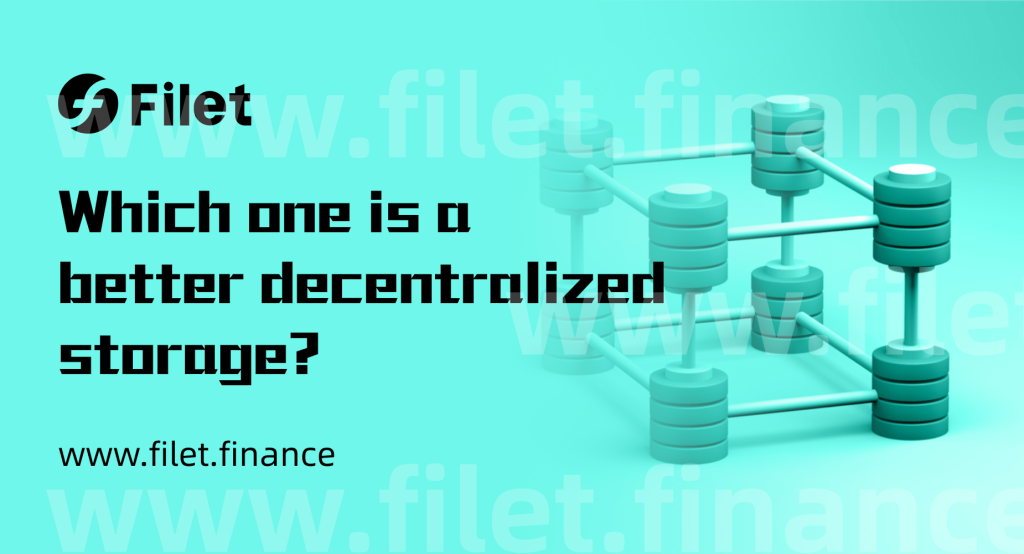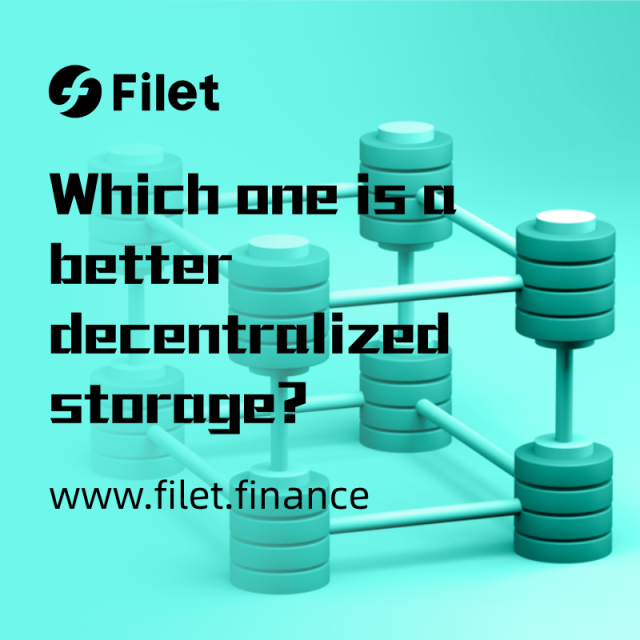
In decentralized storage, there are now only four projects that provide storage services: Filecoin, Storj, Arweave, and SiaCoin. But only Filecoin and Storj are the major players who can really compete in the field of decentralized cloud storage.
Differences between Filecoin and Storj
Product Positioning
Filecoin regards itself as the incentive layer of IPFS to solve the current efficiency problem of IPFS. The core is decentralization. The main target groups are those decentralized geeks and DApps who pursue the freedom of data ownership. At this stage, the Filecoin network is not ready for the traditional storage requirements, because the current Filecoin storage capability has yet to be improved.
Storj, on the other hand, is staking Amazon S3 decentralized cloud storage platform as its rival, like Uber, integrating and utilizing idle resources to output standard and unified products. Its targeting users are those who use Amazon S3 storage services. Storj has faster upload and download speeds, better privacy and decentralization, and is only half the price of similar products on Amazon.
Degree of network decentralization
In Filecoin storage, there are several roles, including storage users, storage miners, and retrieval miners. Miners are completely decentralized, and anyone can become a miner. Judging from the network structure, Filecoin will be more decentralized.
Storj is relatively more centralized in network structure, and a lot of storage is done through “satellites (server clusters)”. If a “satellite” is attacked, all content stored via that “satellite” will be lost.
Token Model
Filecoin’s token model, combined with the storage business, is a business subsidy model. The system issues tokens to subsidize miners’ high mining machine costs so that miners can quickly recover the hardware cost through the system-issued tokens (commonly known as mining rewards). Finally, investors in the secondary market take over and maintain a high currency price to pay for the cost. Therefore, miners can provide external cloud storage services regardless of cost. This is the essence of the Filecoin economic model. Such an economic model has great advantages in providing cloud storage products at a price far below the average price in the market.
In Storj’s token model design, the Storj token is simply treated as the company’s securities for circulation. When a user uploads 1TB of data, the data will be distributed to 80 miners for storage, occupying a total of 2.7 TB storage space, and then charge the user $10, $4.05 ($1.5/TB*2.7 TB) are given to miners, $1 is given to the cooperation partners, $3 are kept by the team, and the remaining $2 is for marketing and other expenses. This is a very traditional economic model design. The relationship between the growth of the business and the increase in the token price is weak.
Entry barrier of mining machine
Filecoin’s mining machine is quite expensive. At present, the minimum cost of a single Filecoin mining machine is $10,000-20,000. For a cluster, it will cost ten times more. More importantly, Filecoin mining also has extremely high requirements in the IDCs, and individuals can hardly meet such requirements.
But the entry barrier of Storj’s mining machine is lower. The minimum requirements are a processor core dedicated to one node, a 500GB hard disk, 2TB of broadband traffic per month, at least 5MB/S for uplink, and at least 25MB/S for downlink. This makes almost every family can use their own PC as a Storj node.
Contact Filet
Webiste: www.filet.finance
Telegram: https://t.me/filet_finance
Twitter: https://twitter.com/Filet_finance
Blog: https://www.filet.finance/blog_en/
Medium: https://filet.medium.com/FacebookTwitterEmailRedditLinkedInWeChat分享
